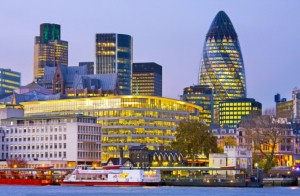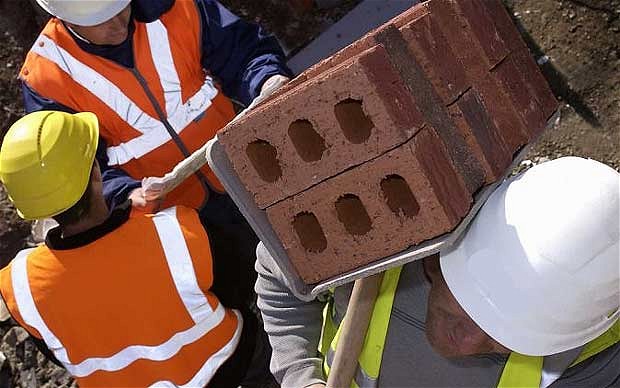Punitive Property Taxation, Brexit and Current Trends and Development Opportunities
02-21-2017
PropertyInvesting.net team
Objective: The objective of this Special Report is to describe the current punitive property taxation regime, how this is distorting the market and touch on Brexit concerns to help give you insights into trends that are developing in the next few years. This can then help you make more rational property investment decisions, develop some good ideas, help identify opportunities an thence improve your property investment returns.
Punitive Tax Regime for Buy-to-Let Investment: The draconian taxation of mortgage interest payment is already distorting the property market and having a very negative impact for tenants. This will only get worse in future years. The new fact is that 60% of buy to let purchases are now with cash, only 40% with mortgages. The amount of buy to let properties being purchase has crashed. Interestingly the cash buyers seem to be targeting lower cost property with higher yields in northern England and the Midlands. Very few buy-to-let properties are now being purchased where they are most needed in London and SE England. In part because of this, the property prices are shooting up in lower cost areas far from London. This will in the next few years lead to an even bigger rental supply crunch in London and rents skyrocketing as the lower paid London workers all scramble for a one bedroom flat or room in a shared flat. Surely the government never planned this to happen another regrettable un-intended consequence of a stupid tax regime of taxing expenses. As far as we are aware, the UK is the first country in the world to tax a business expense at the margin tax rates - normally 40% for higher earners. Its barmy.
Stamp Duty Driving All Time Low Housing Mobility: The huge stamp duty taxes on properties over £3 00,000 are driving some fairly predictable behaviours. This stamp duty particularly effects properties in London and SE England of course. Whats happening is that people instead of moving to a larger home, are staying put and doing the following:
00,000 are driving some fairly predictable behaviours. This stamp duty particularly effects properties in London and SE England of course. Whats happening is that people instead of moving to a larger home, are staying put and doing the following:
Loft conversions
Basement conversions
Extensions to the back
Extensions to the side
Building extra floors to their homes
Building large home office and sheds in their gardens
Converting garages to bedrooms then gardens to off-street parking
Building garages in their gardens, then converting these to guest-summer houses
Impact in London: All these is plane to see in London. It means a home owner adds value by investing say £50,000 rather than destroying value by giving the government £50,000 of their hard earnt wealth for no real gain. The rather unintended consequence of another swinging tax on property owners that is back-firing because so few people now move home and hence stamp duty tax receipts will drop. Another consequence is lack of worker mobility and flexibility. People will make deals with their employees to make sure they never have to move home instead they will work away from home, use the internet to work from home and stay in Travelodge or a pokey one room studio when they do work away from home. Fathers and mother will see less of their family and commuting by train will rise as the SE stamp duty burden intensifies by stealth as property prices rise and stamp duty payments rise.
Our advice to London home owners is do actually the above. Dont move, instead extending your property to as big as possible and use your cash to add value rather than handing it to the government in a £50,000 tax bill. In lower priced areas with property costing less than £200,000 the stamp duty tax is less onerous so it might still be okay to move to a bigger-better home in a nicer area.
Inflation and Brexit: As soon as the UK voted to Brexit, we stumbled into a higher inflationary trend this is very predictable let us explain:
Firstly on the day of the Referendum in June 2016 the currency crashed by 20% - implying future prices would rise by at least 10% more than the May 2016 economic forecasts - for the next few years.
Some European workers has started to leave the UK because of the Brexit uncertainties and because the currency has declined by 20%, acknowledging the money they sent home had just declined by 20% in value against the Euro.
The ensuing Labour shortage is starting to feed through into higher wages wages costs are starting to pick up particularly in the building trade
Oil prices have risen sharply doubling since Jan 2016 and more than doubling in Sterling terms (oil is traded in US dollars)
Despite the Brexit concerns because of the declining Sterling, manufacturing levels have picked up because export orders have risen since exports are now 20% cheaper going to the EU and the USA
Import costs are of course 20% higher and this is starting to feed through into general inflation.
Potential Crisis Spiral: When you look at all the above, the simple fact is, we are starting to move into a new inflationary period that will see food and fuel prices rise sharply, with import costs rising, wages rising but not keeping pace with inflation and presenting a real quandary for the Bank of England. Remember the BoE dropped interest rates to a historic low of 0.25% immediately after the Brexit Referendum. Our prediction is that inflation will rise to at least 2.8% by end March 2017 (the same as we predicted in December) and this could even be as high as 3.5% if oil prices rise further over $53/bbl. Inflation will way overshoot the target 2% and the Bank of England is likely to have to put up interest rates by around May 2017. They might try and hold off for a few months. But eventually they will be forced to do make the rise. Of course the UK has such a gigantic private and public sector debt pile that most citizens, companies and government authorities just cannot afford to pay significantly higher interest rates. Any interest rate increase over 2% will likely lead to disaster and a recession. The Bank of England has been pumping in billions of printed currency into the UK economy for years, and holding interest rates ridiculously low for years. The  UK is like a drug addict, addicted to debt and on life support and stopping currency printing and raising interest rates is likely to kill the patient. We see quite a considerable threat of inflation kicking in this year and hence a higher chance of a financial meltdown associated with it which is another good reason to buy physical gold and silver bullion and store in a secure safe deposit box or specialist secure storage site.
UK is like a drug addict, addicted to debt and on life support and stopping currency printing and raising interest rates is likely to kill the patient. We see quite a considerable threat of inflation kicking in this year and hence a higher chance of a financial meltdown associated with it which is another good reason to buy physical gold and silver bullion and store in a secure safe deposit box or specialist secure storage site.
Boom, Bust, Reflation: One thing is almost certain, if the interest rate increase tips the economy over into a deflationary panic spiral then the only weapon the Bank of England will have is more currency printing and lowering the interest rates again. It could be a turbulent few years.
Turbulence in Property Prices: Regarding property prices in the initial phase of this inflationary shoot up property prices would of course rise. But if higher interest rates induce a financial shock, then property prices could of course come crashing down. Long term though, because there will always be general inflation and low building levels we see a bright future for property in London and SE England.
Brexit Uncertainties to Persist No Surprize: Of course we are in for a few years of turmoil with Brexit but we think most banks look at mainland Europe (Germany-France) then look at the USA (New York and Trump) and think its not bad in the UK at all. Why risk moving at this time. If the UK completely unshackles itself from the Eurozone single trading Bloc it will be able to negotiate its own trade deals, and if the EU punishes the UK the UK has the option to become an offshore tax haven like Singapore a truly global free trading centre which reaches out to all countries rather than being dictated to by Brussels. This could actually be good for the City of London and financial services not bad though only time will tell. The EU will still want to influence and keep the UK shackled on the eventual type of Brexit deal is uncertain as is the economic outcome.
Bankers Like London: What we would say though is that it would be really tough for many bankers to move to Paris or Frankfurt because London has:
The best Universities and schools in Europe also English speaking
Super parks, open spaces, trees, gardens
Excellent tube, rail, taxis
Low city crime rate, almost non-existent gun crime
Super Theatre, Restraunts, Cafes
Historic buildings, culture, diversity
Open friendly environment for all cultures
Best financial services and wealth management in Europe
Access to internationals airports only 10 miles from the West End
Super houses, terraces, flats
Easy access to beaches, coast, National Parks, historic venues
Easy access to south coast boating, surfing, Cornwall-Devon-Dorset
Lots of Festivals and tourist attractions
Super arts scene best rock/pop bands/concerts in the world
With due respect, we really cant see many bankers wanting to trade in their City jobs and a house in Putney for an apartment in Paris or Frankfurt somehow.
Population Boom to Continue: Longer term, the population of Britain will hardly be dented by Brexit. There are so many people coming into the UK from other global countries reducing immigration from mainland Europe will not have a big impact in our view.
Each year, the UK population will rise by around 550,000 the same size as Liverpool. A large proportion of these people will settle in SE England and London where many of the new jobs are. Meanwhile only 130,000 new properties are being built each year. The requirement to keep pace with demand assuming two people per property is around 275,000 properties a year. The chance of achieving this is almost zero. The outcome has to be that people will be spending an ever increasing proportion of their wages on rent and mortgage payments something academic economists have failed to grasp for decades. If property prices drop sharply this would trigger or be synchronous with a recession thence the Bank of England would then print more of the devalued currency and drop rates again to re-inflate the whole thing again. This has been going on for years overall the tax rates increase, currency debt increases, inflation keeps rising, and property prices of course rise with this particularly as so little building is happening.

Population Growth: But the population increase will be very uneven. The biggest percentage population increase will be in London, then SE England, then Eastern England, then the Midlands, then NW England and Yorkshire plus SW England. The population will rise far slower in Scotland, Wales and NE England. Because of this, we expect long term property prices in these regions to lag the higher population growth areas also because building will be easier. The aging population and younger talent leaving Scotland will put a big dent into their property prices in future years, particularly if the SNP keep threatening to leave the Union (UK). If the Scots do leave the UK, their chance of re-joining the EU in our view is miserable because they would have a gigantic deficit and high public sector spending, with an oil industry that was destroyed by high taxes and low oil prices with a gigantic abandonment liability hanging over Aberdeen. Regrettably the biggest business in Scotland and Aberdeen will be abandoning the oil fields.
Inflation Hedge: Property is the best hedge against inflation along with gold and silver so these cycles will find that owners of properties or multiple properties will see their wealth rise or at least be preserved, whilst renters and non-property owners will get poorer and savers of cash will see their wealth destroyed over a ten year period.
Rental Property: The most lucrative strategy in property in London is likely to be to try and get as many separate small rental units in as possible, be it small flats, studios or rooms in shared flats and houses. Of course property prices are very high in most London areas, but the sheer quantity of rental demand in future years is likely to be very high and rents will skyrocket because of the government's crazy and draconian taxation of hard working buy-to-let landlords, perversely targeting those in SE England and London with high mortgage payments (just the sort of landlords they should be encouraging to help with the London rental crisis).
and get as many separate small rental units in as possible, be it small flats, studios or rooms in shared flats and houses. Of course property prices are very high in most London areas, but the sheer quantity of rental demand in future years is likely to be very high and rents will skyrocket because of the government's crazy and draconian taxation of hard working buy-to-let landlords, perversely targeting those in SE England and London with high mortgage payments (just the sort of landlords they should be encouraging to help with the London rental crisis).
Wherever you invest in residential buy-to-let, it is absolutely crucial to make sure that:
The areas is on an improving or at least stable high trend
Private sector jobs growth is anticipated new business is moving in and older businesses are not closing down
Transport and infra-structure improvements are being made
The area has an improving crime trend
Unemployment is on a stable or downward trend
Employment is on a stable or upward trends
A rental flat, house or home of multiple occupation has a very good location to attract rents close to jobs, offices, transport links, universities, schools preferably in a nice quiet street
Development Opportunities: If the property has development opportunities fo r the future this is another big bonus for instance a loft that can be converted, a basement that can be converted, a garden that allows an extension towards the back or side of the property, a garden big enough for a 15m3 studio-summer room or extra garage.
r the future this is another big bonus for instance a loft that can be converted, a basement that can be converted, a garden that allows an extension towards the back or side of the property, a garden big enough for a 15m3 studio-summer room or extra garage.
If you buy a house with a large garden that has road access, then of course you should have your eye on partitioning the garden and building another one or two houses in the garden. Most planning authorities actually like such infill properties since they are on brownfield land, within a city-town-village boundary and the housing shortage is so severe that such properties will help alleviate the crisis. You just need to try and get your neighbours on board. It might mean offering some sort of compensation like offering to build them a patio-decking, even a garage or car port if you think this would help. But dont be scared to put in planning permission anyway your neighbours can complain all they like but the planning officer will often ignore them if the project is right for the overall community.
Development Strategy: Its also worth considering the strategy of:
Converting your garage to an extra double bedroom
Meanwhile building another garage in the garden if access is possible build it with a pitch roof, ladder and storage above, or flat roof and sun terrace on top
Consider building a low cost car port
Build a 3m high by 15m2 wooden summer house or office in the garden at low cost fit with electric heating, electric sockets and broadband-internet this can be used as an office, play area and even for guests in the summer and of course as a summer house/parties if its 15 m2 or less it does not need planning permission
Basement Conversion Plus Extension: For very creative value enhancing investors, you might be considering a basement conversion. Consider that if you also have a large garden, you can dig out the garden and create an extension to the basement then install re-enforced glass ceilings and a sunken patio area with steps up. You might even do a back extension with a back basement extension underneath it. In most parts of Britain, it wont be worth the effort, but in central London in any terrace with a price of over £600,000 this is a potentially a very lucrative opportunity. Another point is you should be creative and push the envelope when you think of development opportunities. Try and not constrain your thinking.
Loft and Additional Floor: Other examples are you have a loft to convert. But if you are in a central city location in a high priced housing area consider whether it is possible to add a whole floor, then a loft conversion above. Or replace the loft with a squared off extra floor or at least a squared off roof at the back of the property, subject to planning permission of course.
Split House into Four Flats: Anyone with a three bedroomed London terrace, with an unconverted loft and basement, consider:
Digging out and converting the basement to a one bedroom flat
Converting the loft to a one bedroom flat
Extending the back of the house then converting the main house into two flats, both with access to the garden
Thats four flats with a rental of say £1000/month an income of £4000/month - that's a lot of money.
We hope we have given you some interesting insights and ideas to boost your income and add value to your property investment portfolio. If you have any queries or comments, please contact us on

